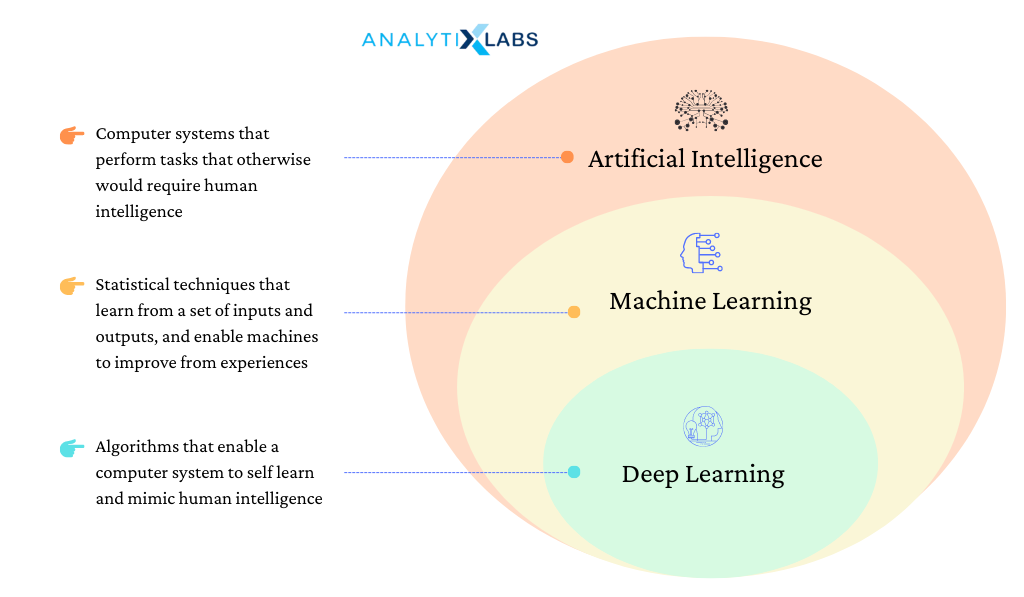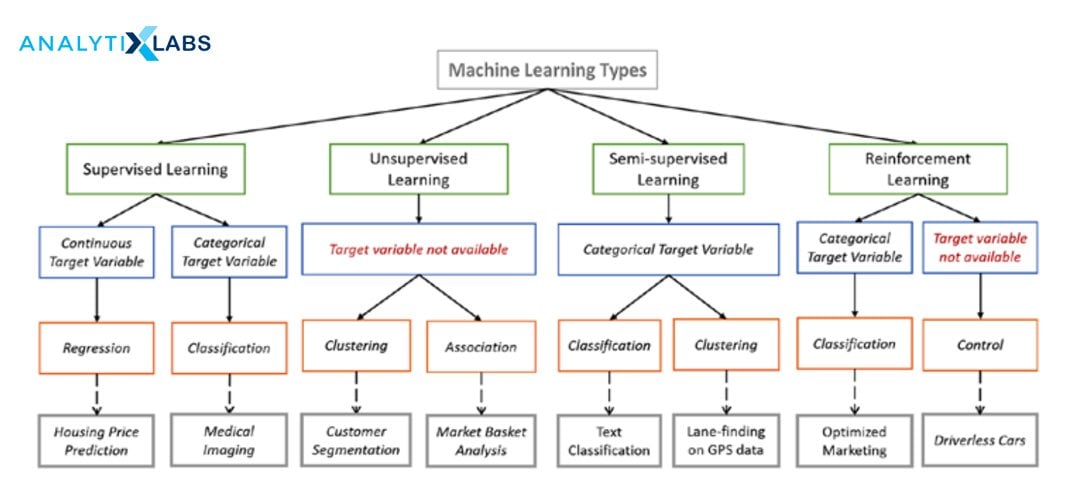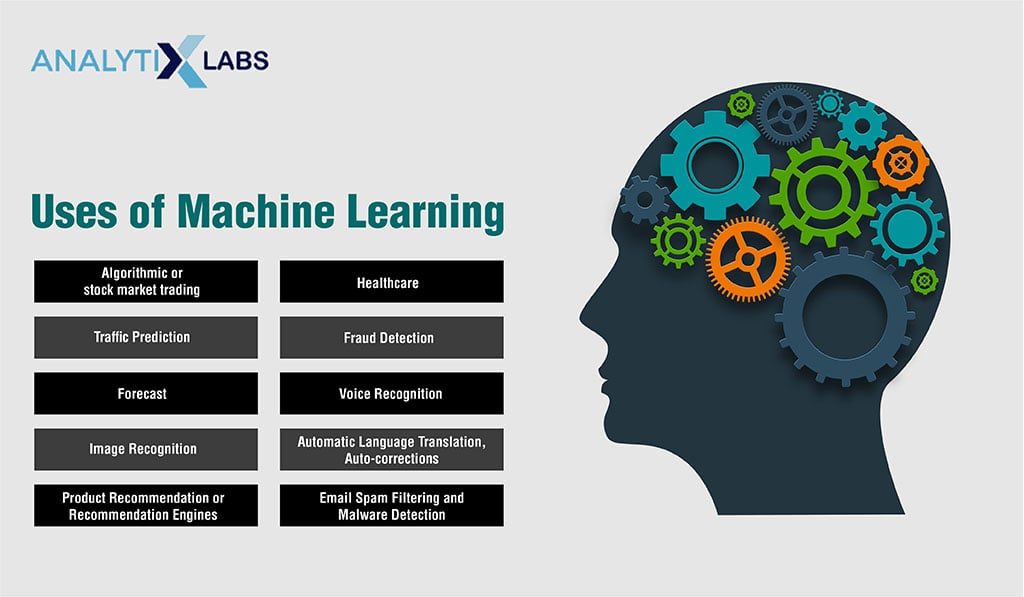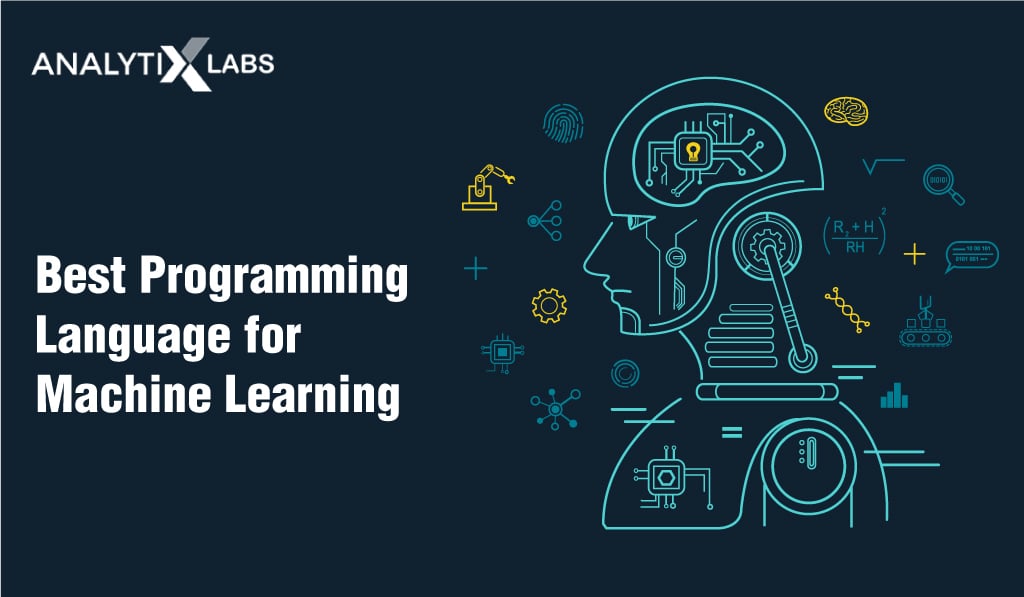A very applied field in today’s time is machine learning. The task of training a machine is not an easy task. It comes up with its challenges. The first and foremost one is to have the skills of knowing how to interact with the machine. To converse with any computer or machine, we need to learn its language, and similarly, machine learning is no different.
It is imperative to know which language is best for machine learning to excel in the field. Learning a programming language is no different than knowing how to ride a bicycle or drive a car. We need to know certain basic aspects of the language and its applications.
The focus of this article is exactly this. We will look at what is a programming language, understand what is machine learning, its use cases, which all companies employ machine learning and the heart of this article is what programming languages for machine learning are available. We’ll also know which is the best language for machine learning in 2023.
What is a programming language?
A programming language is a computer language used by programmers (or developers) to interact with computers. These programming languages are written as a set of instructions to conduct particular tasks in specific languages such as C, C++, Java, Python, and R.
Following are the types of programming languages:
- High-level programming language
- Procedural Oriented programming language
- Object-Oriented Programming language
- Natural language
- Middle-level programming language
- Low-level programming language
- Machine Language
- Assembly Language
- Declarative / Imperative / Procedural
- General-purpose / Domain-Specific
- Object-oriented / Concurrent
- Command / Compiled / Script language
- Answer set
What is machine learning?
Machine Learning, a branch of Artificial Intelligence, creates dynamic, accurate, and stable automated models using mathematical relationships. It involves statistical techniques and algorithms that empower machines to perform and improve specific tasks with experience and without human intervention.
Any hard-coded rules do not define these models. The machine learns from the past data to discover patterns and identify relationships in the historical data and uses these patterns to predict the new data automatically.
Machine learning is a subset of artificial intelligence, while deep learning is a subset of machine learning. While they might seem similar, they aren’t. They are co-related but different.
Read: What is the difference between AI, machine learning, and deep learning?

The steps in machine learning are as follows:
- Collection of the data from various sources
- Clean and prepare the data
- Choose the model
- Training of the model
- Evaluate the model
- Tune the parameters
- Predict the new data
There are several types of machine learning algorithms, as follows:
- Supervised Learning
- Semi-supervised Learning
- Unsupervised Learning
- Reinforcement Learning

The algorithms are classified based on the learning types. Read about the different types of machine learning algorithms.
Uses of Machine Learning
ML programming language is widely applicable in various domains such as e-commerce, logistics, healthcare, manufacturing, marketing, finance, energy, insurance, human resources, government & surveillance, digital media and entertainment, transportation, manufacturing, automobile, art & creativity.

The applications of Machine Learning are:
- Algorithmic or stock market trading: Algorithms such as long short term memory (LSTM), Recurrent Neural network (RNN) are used for stock market trading. The models are tuned for the parameters taking the increase and decrease in stock prices and optimizing the trading strategies.
- Traffic Prediction: If you are commuting to a new place, then on the less traveled road Google Maps is your friend. The maps are effective in showing the correct path with the shortest route, forecasting the traffic conditions, and are also useful in suggesting what time one must depart from a place to reach a destination at a pre-defined arrival time. It predicts traffic situations such as congestion, and slow-moving or clear routes by considering the average time on previous days at the same time and the real-time location of the vehicle from the map application and sensors.
- Forecast: Machine Learning also helps in predicting the prices of cabs, stocks, tariffs of hotels, and sales of stores on a time basis as well.
- Image Recognition: Image segmentation, Object detection, and localization are popular use cases of machine learning to identify objects, persons, places, and digital images. Facebook suggests tagging friends by recognizing photos.
- Product Recommendation or Recommendation Engines: E-commerce sites auto-suggest similar products while placing orders on Amazon, Flipkart, and similarly entertainment sites recommend movies, and songs based on the last bought product and watched or browsed movie or song. These product recommendations are curated using statistical models.
- Healthcare: Healthcare uses machine learning for detecting terminal diseases such as brain tumors, cancer, and non-terminal diseases.
- Fraud Detection: Detection of fraud in online transactions is one the biggest concerns for e-commerce retailers, banks, and payment merchants, and machine learning aids this need by models to ensure the transactions are safe and track down fraud customers.
- Voice Recognition: Machines recognizing voices have changed the face of homes and is one of the most popular use cases of machine learning. Voice recognition involves converting the voice commands into text. This is generally referred to as “Speech to text”, or “Speech recognition.” Apple’s Siri, Microsoft’s Cortana, Google Home Speakers, Amazon’s Alexa, and Google Assistant are various virtual assistants.
- Automatic Language Translation, Auto-corrections: The techniques used for machine translation are sequence to sequence that converts text from one language to another, and auto-corrects spelling errors as well.
- Email Spam Filtering and Malware Detection: Machine learning also helps in detecting malware and spam in email by employing filters.
Companies using Machine Learning
Machine Learning is extensively used by big giants including Apple, Google, Microsoft, IBM, Intel, Twitter, Qubit, Baidu, and Salesforce as well as by startups. Some of the interesting ways the companies in which companies are using machine learning are:
Big corporate giants like Apple, Google, Microsoft, IBM, and more extensively use ML programming language. Not just the tech giants but small and mid-sized startups also rely on machine learning. The majority of tech companies use machine learning to enhance customer satisfaction by tapping into customer insights. For instance, Yelp, a local business review and social networking platform, introduced its own machine learning platform to consolidate all ML infrastructure. Yelp uses machine learning to filter out spam and inappropriate photos using picture classification technology.
Similarly, one of the most popular social platforms, Instagram, relies on machine learning to tailor personalized content based on users’ interests. Here’s how Instagram is leveraging ML programming language:
On the other hand, private banks such as Axis, HDFC, and ICICI, have employed chatbots to speed up the customer support services and automate the processes of reactivating the dormant accounts. Similarly, airline companies and payment merchants such as PayPal are also relying on chatbots to troubleshoot customer queries.
Some more examples:
- Twitter uses artificial intelligence to drive user engagement by evaluating a tweet on a real-time basis and scoring each tweet
- Tesla employs unsupervised learning for self-driving cars. The cars are trained for detecting people and objects.
Now that you can see for real how ML programming language and AI are changing the way the world functions(for the better!), time to start learning the programming languages that can give you entry into this fascinating world.
Best Language for Machine Learning
There is a lot of debate on which particular language is the best for a career in machine learning. While there are multiple answers simply because each language has its own value point, we have rounded up the 7 best programming languages for machine learning.
(1) Python
Developed by Guido Van Rossum in 1991, Python is the most popular and widely-used programming language for machine learning.
An open-source, Python is a dynamic, high-level, interactive, multi-paradigm, scripting, object-oriented, high-level, procedural language. It is easy to write, the readable and understandable language has fewer and easy-to-read English syntax.
Its modus operandi is its modularity. The reason Python stands out from its counterparts is that it does not require saving a code and processing the code later. The codes are directly re-usable by importing the module or the package.
Python is interpretable, scalable, and adaptable. It has various in-built libraries, modules, and packages. It is portable i.e can run on any operating system including such as Windows, Linux, UNIX, and Macintosh.
Python is vastly used in all the spheres of machine learning problems. It can also be integrated with SQL. It is used for data mining and wrangling, data visualizations, model building, pipelining, and can build web applications using Flask for model deployment. It provides a variety of deep and machine learning frameworks.
Various handy libraries exist for machine learning tasks such as:
- Numpy: It is designed for scientific computing.
- Pandas: It is applied for data analysis.
- Scipy: It is helpful for scientific & technical computing.
- Sklearn: This library is built upon Numpy and Scipy, comprising tools for predictive data analysis. It is for the implementation of machine learning algorithms.
- Matplotlib, Seaborn: It is used for building two-dimensional graphs and for visualizing the data.
- NLTK, Spacy: These are applicable for working with textual data.
- Sci-Kit image and OpenCV: These are used to work with the image data.
- Librosa: It is used for working with audio data such as audio pre-processing, and audio and music analysis.
- Keras, TensorFlow, PyTorch: These are all deep learning frameworks for building and implementing neural networks.
(2) R
Another programming language for machine learning among data scientists is R. It is an open-source data visualization-driven language with an emphasis on statistical computing. It provides support for a command line and other Integrated Development Environment (IDE). It is easy to code and also has APIs that allow a user to work with TensorFlow. It has a console, syntax highlighting editors, and a variety of tools for drawing graphs and managing libraries.
R is a functional and object-oriented procedural programming language and was built for high-level statistics and data visualization. To create machine learning models, R offers fast prototyping, works with large datasets, and is good for in-depth analysis. This dynamic and array-based language supports various operating systems such as Windows, Linux, and OS X.
R is very useful for machine learning as it can cover a variety of tasks including data analysis, data visualization, sampling, model evaluation, and supervised and unsupervised techniques such as classification, regression, and decision tree.
It has 12000 packages in the CRAN open-source repository and has the following machine learning packages and libraries that are useful for data visualization, debugging, workspace management, and pre-and-post modeling stages:
- MICE: It is specially designed to work with missing values.
- Tidyr and Dplyr: Both of these are applied for data manipulation that is for clearing and organizing data. It is fast and reduces clutter in coding.
- Ggplot2: It is the data visualization package for illustrating the data.
- Tidyquant: It is applied for business and financial analysis.
- CARET, PARTY, and randomFOREST: It is especially used for working with classification and regression problems, PARTY and rpart for creating recursive data partitions, and randomFOREST for creating decision trees.
Also read: Step-by-step guide to learning R programming language
(3) Java
Java is known for large enterprise development and backend systems. It offers environments for performing various machine learning tasks using graphical user interfaces. Java Virtual Machine (JVM) allows the developers to write codes that are identical across multiple platforms. Java applications are scalable and are also built fastly.
Some of the popular data science frameworks including Fink, Hadoop, Hive, and Spark are written in Java. The production codebases are written in Java. Additionally, the integration and compatibility concerns are reduced as many software, applications, and the company’s infrastructure is built with Java.
Java is useful for various processes in data science such as cleaning data, data importation and exportation, statistical analysis, deep learning, NLP, and data visualization.
The popular tools and libraries for machine learning are:
- Weka: It is a free, portable library having many general-purpose utilities for machine learning including algorithms, data mining, data analysis, and predictive modeling.
- JavaML: It is a Java API with a user-friendly interface to implement the compilation of machine learning and data mining algorithms with articulately written and well-documented implementation of algorithms.
- Deeplearning4j: It is a distributed deep learning library and is open source. It offers a computing framework supporting machine learning algorithms and high processing capabilities.
- ELKI: It is an open-source data mining framework focussing on unsupervised methods. It has an emphasis on the evaluation of data mining algorithms and data management and can work with various arbitrary data types, file formats, or distance or similarity measures.
- Apache mahout: Apache mahout is a scalable, ready-to-use framework for huge data mining tasks and is useful for the creation of scalable algorithms.
- Massive Online Analysis: An open-source software, it is useful for real-time analytics and applied for data mining on data streams on a real-time basis.
- Mallet: Mallet is built on Java and processes textual documents. This is a specialized natural language processing framework useful for topic modeling, document classification, clustering, information extraction, and information retrieval.
(4) C++
Though not a very popular programming language for machine learning C++ has various advantages. C++ is efficient, offers a level of control – it allows to control of single resources like CPU, and memory management, can manipulate algorithms and has various libraries such as:
- Tensorflow: This is Google’s open-source library having utilities such as computational graphs, data flow graphs, library management, debugging, scalability, and pipelining. It is useful to perform many numerical computations.
- Microsoft Cognitive Toolkit: Another open-source library, it is useful for deep learning and large datasets using directed graphs for visualizing neural networks and performing computations.
- Caffe: Caffe increases speed and is a deep learning framework allowing to work with expressive architecture, and extensible code.
- Mlpack: Mlpack is a flexible machine learning framework. Its focus is on scalability, and speed, and is easy to use.
- DyNet (Dynamic Neural Network Toolkit): It is a high-performance, neural network library that runs efficiently on a CPU or GPU. DyNet support Natural Language Processing (NLP), graph structures, and reinforcement learning.
- Shogun: Shogun is an open-source library providing a variety of tools. It has various machine learning methods including multiple data representations, algorithms classes, and general-purpose tools.
- Torch: Torch is an open-source library offering improved speed and is efficient. It provides a large number of algorithms making scientific and numerical operations easier.
(5) Julia
Julia is an open-source, high-level, general-purpose dynamic programming language. It is both functional and object-oriented and is favored by developers as it has easy syntax. It is accessible and easily understandable.
This scripting language is useful for high-performance numerical analysis and computational statistics. It has a vast mathematical function library offering basic mathematics and scientific queries enabling it to be suitable for machine learning. It is best suited for deep learning, is very scalable, and can be deployed quickly at large clusters. It is supported for both TPU and GPU on all the popular clouds.
Julia also provides support for integrated development environments (IDE) such as Visual studio and Juno and editors including Emacs and VIM. Julia’s code is universally executable meaning once a code is written in a machine learning application then can be compiled in Julia intrinsically from other languages such as Python or R using PyCall or RCall. Its code is compiled at a run time or Just-in-Time through the low-level virtual machine (LLVM) framework.
Julia has the following powerful tools:
- Flux: It comes with the same functionality as Tensorflow. Lightweight ML library, useful tools to help you use the full power of Julia
- Knet: Written in Julia, active community. Deep learning framework that supports GPU operation and automatic differentiation using dynamic computational graphs for models in Julia
- MLBase.jl: It is used for data processing and manipulation, evaluation of models, cross-validation, and model tuning.
- TensorFlow.jl: It offers the option to express computations as data flow graphs.
- ScikitLearn.jl: It allows preprocessing, clustering, model selection.
(6) Scala
Scalable Language (Scala) is known to be a multi-paradigm programming language. It is a high-level language including features of both functional programming and object-oriented programming. Similar to Python, which is an object-oriented language, each value is an object.
Scala is a statically typed language that helps avoid bugs in complex applications. It was initially built for Java Virtual Machine (JVM) and its source code is compiled into bytecode and executed by JVM.
Scala uses Java Virtual Machine to execute bytecode. The code is automatically compiled into bytecode and execution is done by Java Virtual Machine (JVM). This eases the execution process on Scala as it requires only a JVM to initialize the development and then all the java classes can be used for the creation of the custom class.
Some of the popular libraries of Scala that are meant for the development of applications and operations such as scientific computing, linear algebra, and random number generation are as follows:
- Saddle: It is built on top of array-backed data structures and is useful for data manipulation by way of 2D data structures, and array-backed support.
- Aerosol: Aerosol is a fast GPU and CPU-accelerated library which accelerates programming.
- Breeze: It is the primary scientific computing library that is very fast and efficient for manipulations with data arrays.
- Scalalab: Scalalab is the Sacla version of MATLAB having computing functionality. It comes with the scalability and power of Scala.
- NLP: NLP is used for natural language processing and has high speed and GPU usage which can parse sentences.
These libraries are useful for data manipulation via aspects such as automated data alignment, 2D data structures, and automated data alignment.
Scala’s key aspect is it is developed for dealing with enterprise-level applications that have vast databases having large amounts of data and require scalability. It is utilized for various purposes including preparing small scripts to curate huge systems for data processing.
Scala is employed for data processing, distributed computing, and web development, empowering the data engineering infrastructure of firms. It is useful for machine learning as it:
- Has readable syntax properties
- Operational features such as string comparison advancements, pattern matching
- Various useful utilization of Java Virtual Machine libraries useful for enterprise code
- Libraries performing scientific computing, linear algebra, and random number generation functions
(7) LISP
List Processing (LISP) was developed by the American computer scientist and cognitive scientist, John McCarthy in 1958. This artificial intelligence-focused language is the second oldest programming language and is very much in use.
LISP is a dynamically written programming language that has led to the creation of many popular machine learning programming languages including Python, Julia, and Java. LISP has a fast prototyping capacity, is very flexible, and aids in easy and dynamic object creation. It provides an automatic garbage collection and support for symbolic expressions. It is specifically useful for inductive logic problems and machine learning.
LISP has features of a domain-specific language that is embedded with code, compiled, and can run code in 30+ programming languages. Works on Read-Eval-Print-Loop (REPL).
These are the top 7 machine learning programming languages that you must learn for a lucrative machine learning career. However, much debate often ensues between Python, R, and SAS as to which is best.
While we have not discussed SAS here, it is another popular machine-learning language. Download our free eBook, which contains a comparative study of Python, R, and SAS for machine learning.
Multiple overlaps might exist, but you will understand the stark differences when you opt for any artificial intelligence and machine learning course. Learning these disciplines will help you identify how and where they differ and their implications.
Before you start learning, here are some commonly asked questions below for more clarity.
Best Programming Language for ML: FAQs
1. Is C++ good for machine learning?
Compared to the other machine learning programming languages, C++ is fast and reliable and machine learning requires speed which makes C++ good for machine learning. C++ also provides a good source of a library that is supportive of machine learning.
2. Which language is best for machine learning and AI?
The best language for machine learning and artificial intelligence is Python.
3. Is coding a good career?
Coding is an important skill to learn. Enabling an inanimate object to function properly on its own from end to end is certainly a challenging role and requires meticulous attention. Therefore a huge demand exists for skilled developers and coding is a very lucrative career.
4. Is C++ or Python better for machine learning?
Over the other machine learning programming languages, Python is a more popular programming language for machine learning. Python has various advantages over C++:
- It has simple syntax, is written in the English language, is flexible, and is easier to learn. Taking the attention off the syntactic language, Python lets focus on the subtleties of machine learning.
- Python offers a vast number of libraries and packages.
- It is easier to debug in Python for machine learning than to debug in C/C++.
- Using Python’s interpreter can easily interact and work with the data.
5. What are the top five best programming languages for machine learning?
The top five best programming languages for machine learning are Python, R, Java & Javascript, Julia, and Scala.
We hope you find this article helpful in understanding the best language for machine learning 2023. Happy learning 🙂
Also Read:









1 Comment
Thank you for sharing your valuable insights!